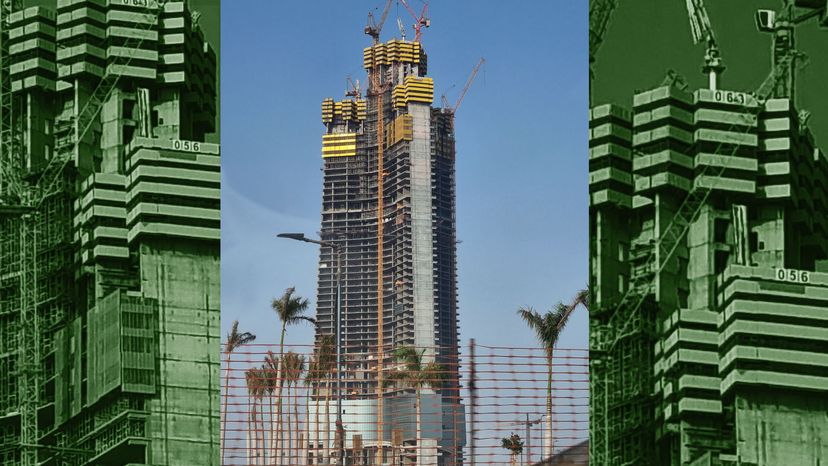With its remarkable design and architecture plans, Jeddah Tower is a true marvel of engineering. In this section, we'll explore the captivating aspects of its height and structure, as well as its sustainable features. Get ready to be in awe of the towering height and impressive structural elements, while also learning about the eco-friendly innovations that make this architectural masterpiece truly exceptional.
Height and Structure
The remarkable engineering and design feats of Jeddah Tower will be evident in its height and structure. When completed, it will stand at a staggering 1,000 meters (3,281 feet) and become the tallest building in the world. The tower's design features a reinforced concrete core complemented by a bundled tube design, providing exceptional strength and stability even at extreme heights. This innovative architecture enables the tower to endure high winds and seismic activity, prioritizing the safety of its occupants. Notably, the tower's base is wider than its top, creating an elegant tapering effect that contributes to its structural stability.
To further bolster its structural integrity, engineers have implemented cutting-edge technologies. With an advanced system in place, the building could effectively counteract swaying and vibrations caused by external forces, particularly strong winds, thereby ensuring a smooth and stable experience for both residents and visitors alike.
The exceptional height and unique structure of Jeddah Tower serve as a remarkable testament to the capabilities of human engineering. It acts as a beacon of ambition and progress, destined to become an iconic landmark that attracts tourists from around the globe, subsequently bolstering the local economy. Undoubtedly, the tower's towering height and architectural marvel will leave an indelible impression on all those fortunate enough to behold it.
Sustainable Features
The sustainable features of Jeddah Tower make it an architectural marvel, contributing to its eco-friendly design and reducing its environmental impact. These features include energy efficiency, renewable energy, water conservation, waste management and green spaces.
The tower incorporates energy-efficient technologies and design elements to minimize energy consumption. This includes efficient lighting systems, insulation and HVAC systems. In addition, Jeddah Tower will utilize solar power to generate electricity, with solar panels installed on the building's roof and facades.
Water conservation is also a priority for the tower, which is why they plan to implement measures like low-flow fixtures and water-efficient landscaping. The tower will also employ rainwater harvesting systems for irrigation purposes.
Moreover, Jeddah Tower promotes waste reduction and recycling by having recycling facilities and waste separation systems available.
The tower also incorporates green spaces and gardens, improving air quality and reducing the urban heat island effect.
